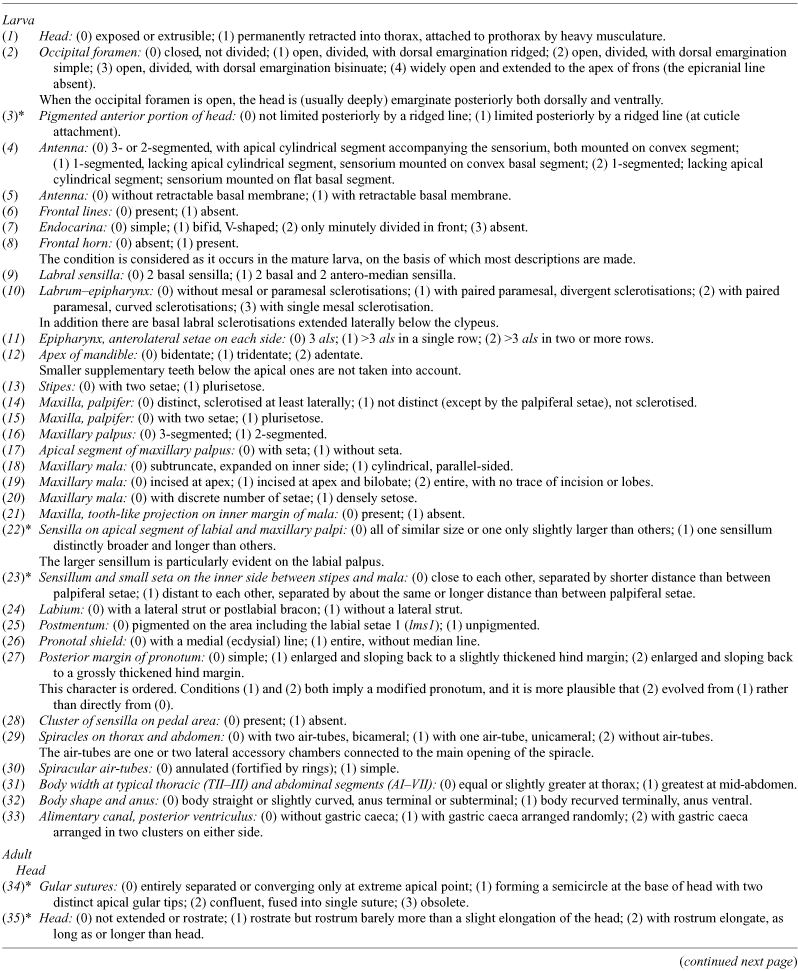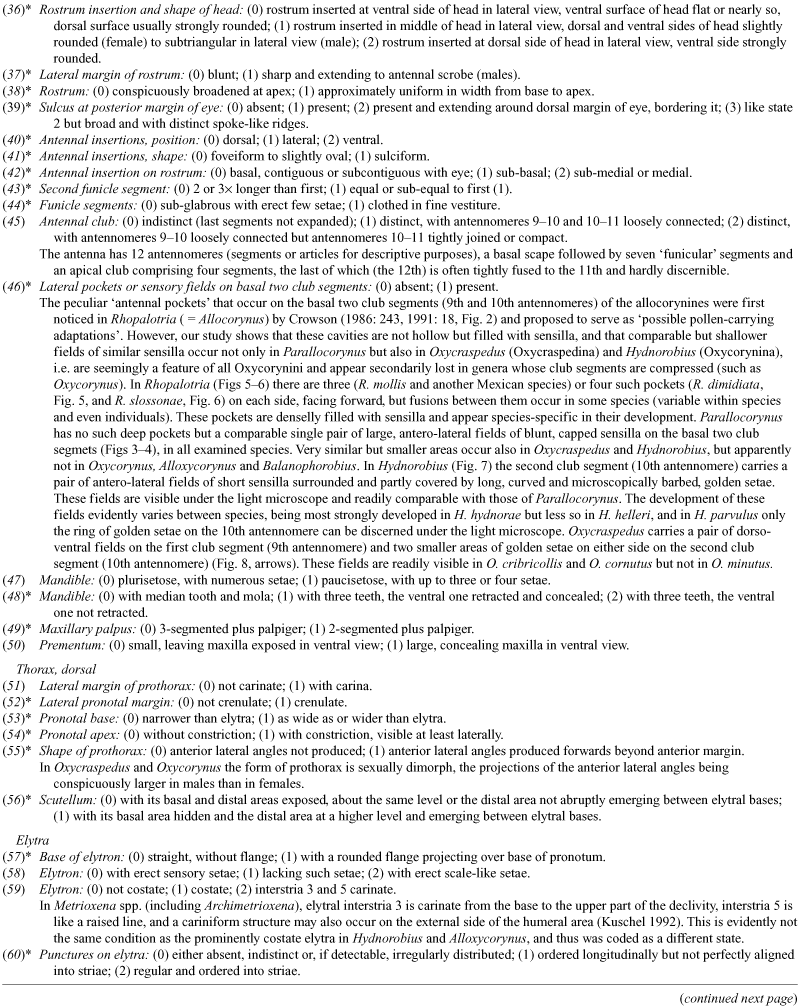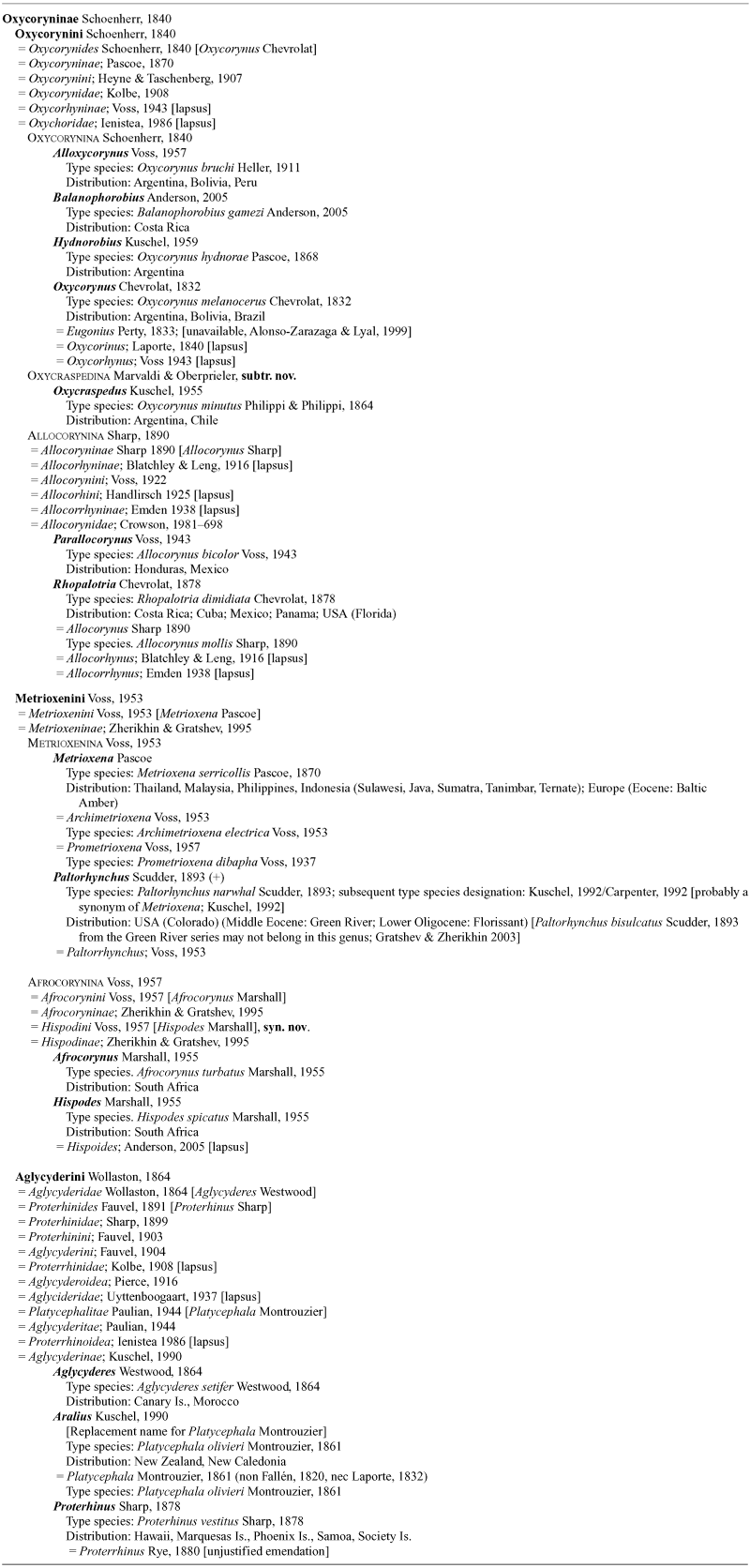Phylogeny of the Oxycoryninae sensu lato (Coleoptera : Belidae) and evolution of host-plant associations
A. E. Marvaldi A E , R. G. Oberprieler B , C. H. C. Lyal C , T. Bradbury C and R. S. Anderson DA CONICET, Instituto Argentino de Investigaciones de Zonas Áridas, Entomología, CC 507, 5500 Mendoza, Argentina.
B CSIRO Entomology, GPO Box 1700, Canberra, ACT 2601, Australia.
C The Natural History Museum, Department of Entomology, Cromwell Road, London SW7 5BD, UK.
D Canadian Museum of Nature, PO Box 3443, Ottawa, ON K1P 6P4, Canada.
E Corresponding author. Email: marvaldi@lab.cricyt.edu.ar
Invertebrate Systematics 20(4) 447-476 https://doi.org/10.1071/IS05059
Submitted: 20 December 2005 Accepted: 29 June 2006 Published: 29 August 2006
Abstract
Phylogenetic relationships among the genera of the subfamily Oxycoryninae and other belids (Curculionoidea) were reconstructed by cladistic analysis using 21 terminals and 98 characters: 62 from imaginal morphology, 33 from larval morphology and three biological characters relating to host plants and larval feeding habits. Terminal taxa represent all extant genera of Oxycoryninae, two genera of each of the three tribes of Belinae plus two outgroup taxa used to root the tree. New information on the larvae and biology of the metrioxenines is used in phylogenetic reconstruction. In accord with the single optimal cladogram obtained, a revised classification of the Oxycoryninae is proposed. The subfamily is classified into three tribes (Oxycorynini, Metrioxenini and Aglycyderini), with the tribe Oxycorynini further classified into three subtribes (Oxycraspedina Marvaldi & Oberprieler, subtr. nov., Oxycorynina and Allocorynina) and the tribe Metrioxenini into two subtribes (Metrioxenina and Afrocorynina ( = Hispodini, syn. nov.)). Larval and adult unambiguous synapomorphies defining each clade are identified. Tracing the evolution of biological traits from the phylogenetic estimate indicates that drastic shifts to phylogenetically distant host plants occurred from the ancestral belid association with conifers. Structural, chemical and/or ecological similarities of the plant organs consumed apparently had a major influence in the colonisation of different plant taxa by this group of weevils.
Acknowledgments
An earlier version of this study was presented at the Phytophaga Symposium during the XXII International Congress of Entomology held in August 2004 in Brisbane, Australia, organised by Rolf Oberprieler and Catherine Duckett. A. E. M.’s work was funded in part by the Consejo Nacional de Investigaciones Científicas y Técnicas (CONICET, Argentina) through a research grant (PIP-5766), by Fundación BBVA (‘Yámana’ project), and an Overseas Travel Grant by CSIRO Entomology to R. G. O. facilitated a visit by A. E. M. to the Zimmerman Weevil Research Laboratory in Canberra in February 2005 and the completion of this study. We thank Ben Boyd (CSIRO Entomology) for assistance with scanning electron microscopy and two referees for their constructive comments on the manuscript.
Anderson R. S.
(2005) New Oxycoryninae from Central and South America: phylogenetic and biogeographical implications (Coleoptera: Belidae). Systematic Entomology 30, 644–652.
| Crossref | GoogleScholarGoogle Scholar |
used 25 morphological characters from the adult, 30 from the larva and three from biology. We have expanded the dataset by 37 additional imaginal and three larval characters (indicated by an asterisk) and also changed the states of some of her characters to accord with the additional taxa and character studies here included.




|


